The Federación Anarquista de Gran Canaria or FAGC celebrates its 10 years of existence this month. In the past we already translated a series of articles written by them outlining their ideological approach in what they call “neighbourhood anarchism”. But to celebrate this anniversary we decided to translate a summary of their history in these 10 years where they went from disrupting speeches by reforminist unions during the 15M square occupations to being the single entity in Gran Canaria that has facilitated more houses for people. All of this while enduring police repression and torture, internal conflicts and splits, twitter censoship, attacks and outrage from stablished anarchist and much more.
These are the victories, mistakes, and the many lessons learnt from both, of the FAGC. Congratulations on these 10 years and we wish you many more to come!
¡Viva la FAGC! ¡Viva el anarquismo de barrio!
– Anarchist Federation Member & Translator
This August the FAGC (Federación de Anarquistas Gran Canaria) celebrates ten years of existence, 10 years of neighbourhood anarchism. We are gonna do a quick and brief overview of the historical trajectory of the FAGC. We have to return to 2011, to a society shaken by the demonstrations of indignation of what would become known as the 15M
On the 16th of May a group of young anarchists burst into the San Telmo square handing out a leaflet. It said things like this:
Something has been put into motion and we can’t content ourselves with just looking. First of all, we are gonna receive a lot of shit, many insults and defamations. Both the parliamentary left and right, with their pretend feud, have polarized the social life of the State; now they see we don’t want either of them, that there’s only two groups: them and us, oppressors and oppressed, rich and poor, they cower in fear and close ranks. The fear they show for a “simple protest” is a symptom showing that this can be something more.
But this cannot be the only thing that worries us; this enemy is easy to identify. What we have to make sure is that this movement is not used by anyone but by the social discontempt itself. A lot of “fathers” and “tutors” are gonna appear out of nowhere, many who are gonna try to redirect us “poor idealists” to a more “practical” and “constructive” way. Don’t be fooled! Everything that smells like politics, not understood as the administration of the polis but the “art of governing”, will try to disassemble this movement and turn it into a tool for their own interests. Our only chance is to spit fire in the face of the “firefighters”, of the career politicians that want to turn this into their electoral campaign. To reform the laws? To refund the system of free exchange and try to radicalise the electoral left? To ask for state intervention? This is hanging ourselves by the neck with our own hands but using the noose they give us. Ricardo Flores Magón said: “Revolutions fail because, once they triumph, they let everything in the hands of the new revolutionary ‘government’, instead of doing it themselves”.
There hasn’t even been a total insurrection and yet and we are already asking the law and the system to reform they would they themselves created? What we need is free access to utilities, housing and food. What we need is for the workers to control the production. The financial and banking system cannot be “redirected”, but destroyed. It must be us, in whatever way we decide, who manage our own lives. Don’t let yourself be infected by the “pragmatism” of the moderates. If you want Everything, don’t ask for it: TAKE IT.
What was the reaction of the first 15M integrants to this leaflet? An urgent assembly was called to…EXPEL THE ANARCHISTS.
Students indignated because we were “”proposing a revolution and they only wanted to “change things a bit”. Puritans of political parties saying they should call the police on us to kick us out (from a public park, yes). But there were also voices defending us.
They could not kick us out, not even if it was decided by a majority they didn’t have. We found out that they had used the same procedure to kick out feminist compas for a placard: “The revolution will be feminist or it won’t be”
With all this mess, did we leave or stay? The easy option was to leave, but as anarchists we never choose the easy way. To leave meant to leave the square to the parties and the opportunists. We went into the Respect Commission, with the objective of showing a different way of solving conflicts.
Our intention was to keep the police out of the square (to whom the “indignados” themselves called for any reason), avoid the exclusion of the homeless compas who were camping and generally show that our ideas were useful.
In little time the perception some of the “indignados” had of us changed. A lot of people started to come to us saying they were anarchists, but didn’t say when we arrived because we entered “like a bull in a china shop”.
More and more people joined: old militants of the COA (Colectivo de Objeción de conciencia y Antimilitarismo / Collective of Conscientious Objectors and Antimilitarism) from the 80s, people from inestable Grancanarian CNT, punks, young people who sympathised but didn’t know anything about anarchism, independentists, etc. The “black block” emerges.

In actuality this was the name given by our detractors, but we thought it was funny. During the month of July we started to think about creating a federation, a FAGC. We also thought it was funny, because of the FAI and because of “Fuck” (yes, we were very young)
Around the middle of August (the exact date is a mystery), in San Juan Park, Telde, the foundational assembly of the FAGC takes place. No document was written. No photo was taken. Most of the current FAGC didn’t attend this assembly. But that’s where everything started.
When San Telmo is evicted, we anarchists are on the front-lines. And also when it comes time to give a solution for the homeless compas that with the eviction also lost their refuge. An abandoned hotel is occupied. The first official squatting of the FAGC.
And also the first official trial of the FAGC for usurpation. The compas would be found innocent and there was a great mobilization from the healthiest and more committed part of the 15M.

Around this time the first important action of the FAGC takes place: to take lead of the a demo aways from CCOO and UGT (Two reformist unions from Spain). The slogan? “The only good Constitution is a burning one”.
Around that time the parties launch a powerful offensive to control the 15M in San Telmo. There’s a rumour going around that “the anarchists are a majority in the assembly and they are radicalising us”. The truth is that we were never more than 15, with a lot of sympathisers. (Read more)
The people who fear the 15M would end up becoming another political party, come to the anarchists to counter that influence. But the FAGC has an internal “rule”: to participate in the 15M as individuals, to not speak about the 15M in assemblies of the FAGC. In short, to not rule.
So Ruy developed an organisational model (to counter others who wanted that a collective/party voted and had the same weight as a neighbourhood assembly) that ensured the assembly’s autonomy. Ruy’s model won by majority.
In the model it reads:
The structure of a Movement that is horizontal, headless (without leaders) and popular cannot be understood as a “top down” correlation.
To stop any attempt at verticality we must try to organise things from the simple to the complex, promoting that the sophisticated depends inexorably on the basic.
But if the circularity scares the hierarchy, it will be the federal method what will allow to maintain the autonomy of the assembly. According to this principle, every assembly is autonomous and if we understand the Assembly as a method of collective decision-making in opposition to the powers that be, we understand that on it, and not in any other organ, is where sovereignty resides. This makes commissions mere tools that must only implement what the Assembly agreed.
We haven’t forgotten that the Collectives, unlike other social groups (workers, the unemployed, students, retired people, neighbours, etc) are united by ideological affinity, and that the horizontality must prevent any kind of outside control.
The successes come with police attention. In the next demonstrations and strikes a dynamic was repeated: the police charging against the anarchists and the confrontations with the “security” of the reformist unions.



The banners say “Better without the system: Revolution and anarchy!” and “You sow hunger, you’ll have revolution”
We are now in 2012. Chaotic year. That’s when we kicked out, together with young independentists, the Nazis from Respuesta Estudiantil from a demonstration where they had agreed their participation with the biggest student collective of back then.
And also took place of our greatest hits: the taking of a platform that belonged to the reformist unions and their expulsion from it. An action that, although discussed informally, happened spontaneously to try to avoid the massacre of our block.
The FAGC from the outside gave an image of being “powerful”, but in reality it had suffered its first split a few months before and it was immersed in a debate about its nature and objectives. Everything started around the squatting of abandoned land.
Even then you could see in the FAGC two different sectors, one with more inclination with the “conventional” anarchism, with its typical actions: campaigns of apostasy, recreational activism, etc; and another more “from the neighbourhood”, more focused in reaching the people around them.
The discussion developed around an issue: to share part of the harvest with neighbours without resources and invite them to join the project or to take everything harvested for ourselves? We didn’t know how to manage the disagreement and little by little the supporters of the second option left.
Around then the FAGC was being mentioned in the local news (negatively) and it attracted young anarchists angry with everything, but our real effect in our neighbourhoods was minimal. We were very combative, but we didn’t speak to our people, only to ourselves.
We had a period of deep analysis, of contemplating the Canarian misery in all its depth and reach. Why, if most of us were from La Isleta, El Polvorín, Jinámar, Las Remudas, San Cristóbal, El Risco, Las Chumberas, etc (Different villages from Gran Canaria) we didn’t speak with our neighbours?
The period of demonstrations had been ok, it was very necessary to build strength. But in two years hundreds of demonstrations had taken place, and besides scaring the bourgeois, we hadn’t accomplished anything.
The battle for the horizontality of 15M had been a crash course on “realpolitik”. But beyond joining forces and bringing our ideas to a new public, did it make sense to continue in a “movement” that was only a collective now?
We started by opening our doors to our agricultural project. It was the first time that, as the FAGC, we worked with non-anarchist people on an anarchist project. That’s how “Land And Freedom” was born.
We continued our analysis of the Canarian situation and we saw that housing and evictions were two of the things that worried our neighbours more. A roof over your head, a house, warm clothes, the basic, the necessary. Our vegetables plot covered the first, but what about the rest?
For the clothes we created “Solidarity Meeting Space”, a network to freely exchange and share clothes, toys and other goods. Informally, it still continues. As well as 4 vegetable plots that feed 2 communities of 260 people and several more families.
But housing was much more complicated. We had already squatted before (some since they were teenagers) and we had stopped evictions with the 15M, but all the legal shit was beyond our understanding. We tried to unite with the local PAH (Plataforma de Afectados por la Hipoteca, network of groups involved in the housing struggle) and squatting movement.
The idea was that the PAH would take charge of the legal part, the squatting movement of the rehousing and the FAGC of the eviction resistance (our true speciality). But it didn’t work… The PAH at that moment didn’t deal with cases of renting or squatting.
Involved in a legalist and institutionalist process, it didn’t wanna have anything to do with the anarchists, so we limit ourselves to go to their assemblies to kick the hornet’s nest and fish for neighbours unhappy with their “half measures”.
The squatting movement did rise to the occasion for months, stopping evictions with us and rehousing. But its internal dynamics, the thing about spaces for “travelers” or meditation, made it last little. The FAGC had to make the decision of being all-encompassing.
We immersed ourselves in legal law (like the atheists who read the bible) and we started to create our reserve of socialised houses (the plan B) and we started to stop evictions by ourselves. The “Grupo de Respuesta Inmediata” (Group of Immediate Response) was born.

We made the first “Assemblies of Renters and Neighbours” of which the first public squats were born, together with the neighbourhood. In the photos you can see two assemblies (the first one just after the arrest of two compas) and one “socialisation caravan”.



We made our first rehousings, but it’s exhausting to limit ourselves to single-family houses. This is when, towards the end of 2012, the possibility of creating the “La Esperanza” Community was born. In february of 2013 we let in the first family. 20 families by May.

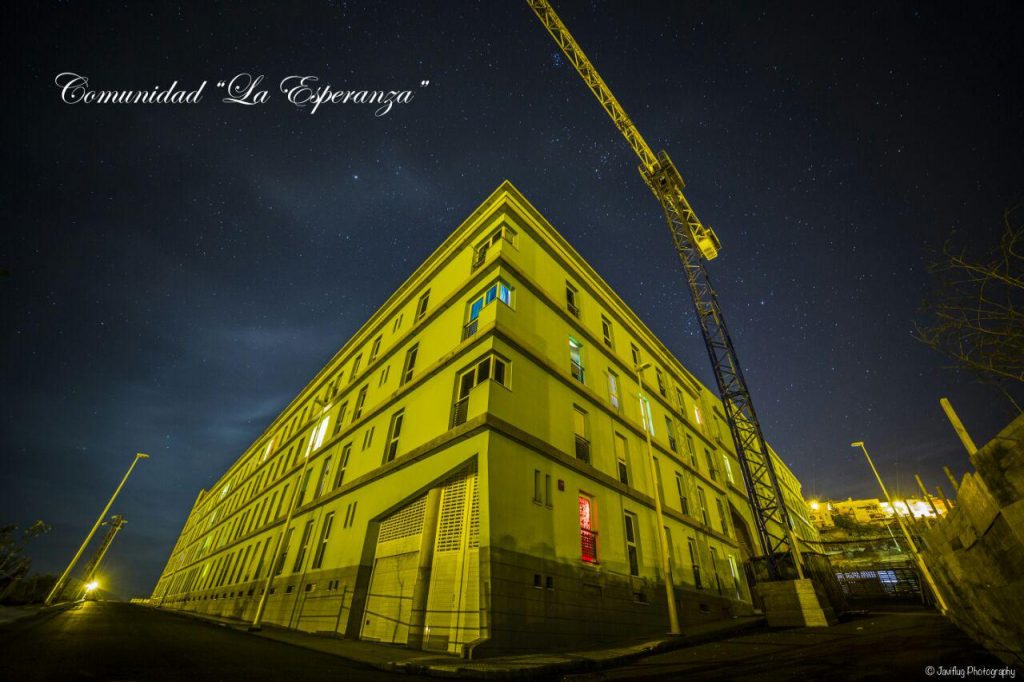

The overload of work starts to be brutal. There’s compas for who liked the theory of “working with non-anarchist people”, until it was time to put it into practice. Personal disappointments, communitarian conflicts… the theory spoke nothing of that.
A lot of compas don’t organise anymore, the weight falls on very few people and there’s then a conflict and the second and last split. There’s people who want to “do other things” and some others who want to continue in “La Esperanza” and in housing, but with the participation of everyone.
The first sector is the majority. The second one leaves and continues to squat, letting the first one do whatever they want with the name. In a month the FAGC doesn’t exist anymore. “La Esperanza” is allowed to manage itself however they want.
Months later the neighbours from the community contact the minoritarian group: they need a hand with those “assamblearian” and “horizontal” things because they tried a presidential system and it had been chaos.
We still have the minutes from the first assembly of the Community when it reinstituted the assamblearian model:
A periodic Neighbourhood Assembly will be constituted to manage the common matters. Said Assembly will have the capacity of making decisions about the opening and set up of new homes, rehousings, establishment of fees, bank procedures, maintenance, etc.
It is decided to “start from scratch”; past conflicts and grievances won’t be taken into consideration.
It is established that all neighbours are equal and therefore there’s no need for any position of leadership, management, presidency, etc. All decisions are made in common.
In the case of unforeseen expenses, an emergency assembly will be called to decide on the need of a collective fund to pay for them.
Taking into considerations the minimum expense of the community, it is established a quota of 25 euros per month for each house.
The payment of the quotas can be done between day 1 and 30 of each month and will be given to the treasurer. If a neighbour can’t pay the quote in its entirety, they’ll contribute whatever they can (Ruy promises to pay the difference in case of proved need).
The assembly bluntly rejects the extortion or intimidation of any neighbour for not paying. No neighbour can be evicted or denied water or electricity because of not paying.
We needed a platform to spread our voice and by petion of the neighbours, and seeing as the compas who kept the name had stopped using it, the FAGC was refounded in 2014. A very different FAGC from its beginnings.
The more we organised with non-anarchist people the more ideological anarchists started to disappear and more neighbours were joining the FAGC. It starts the golden times of self-management, with the first massive experiences, with the first failures, but also satisfaction.

Even before “La Esperanza” a self-managed community had been started (still continues to this day, it’s “El Project”, whose location remains secret). But “La Esperanza” is way bigger, 210 people and it allowed to experience “anarchy” in our own flesh.
From 2014 to 2015 the FAGC was busy experimenting with the limits of self-management. With all its contradictions and conflicts. Two blocks in disrepair of “La Esperanza” are rehabilitated and the last 5 families are rehoused (76 in total) and the project is considered finished.
It’s around this time when agents from the Guardia Civil (Militarised police unit from Spain. Known for being bastards among bastards.) illegally detain Ruy and torture him on the station. By accessing the police report we see that for the Guardia Civil “La Esperanza” is a “hot spot” and they criminalise the community without remorse when preparing the intervention.
All the alarms go off. The timid attempts at letting ourselves be known are set aside and a state-wide campaign is initiated to avoid any kind of reprisal. That’s when “La Esperanza” became known as the biggest self-managed community in the State.
In 2016 the mayor office of Guía (town where the Community is located) commanded the neighbours to abandon the community in a month (as if they were able to) and panic spread. Fearing a preemptive eviction, the FAGC and the neighbours start a powerful campaign. A month later the neighbours are still there. This February it turned 8 years old.


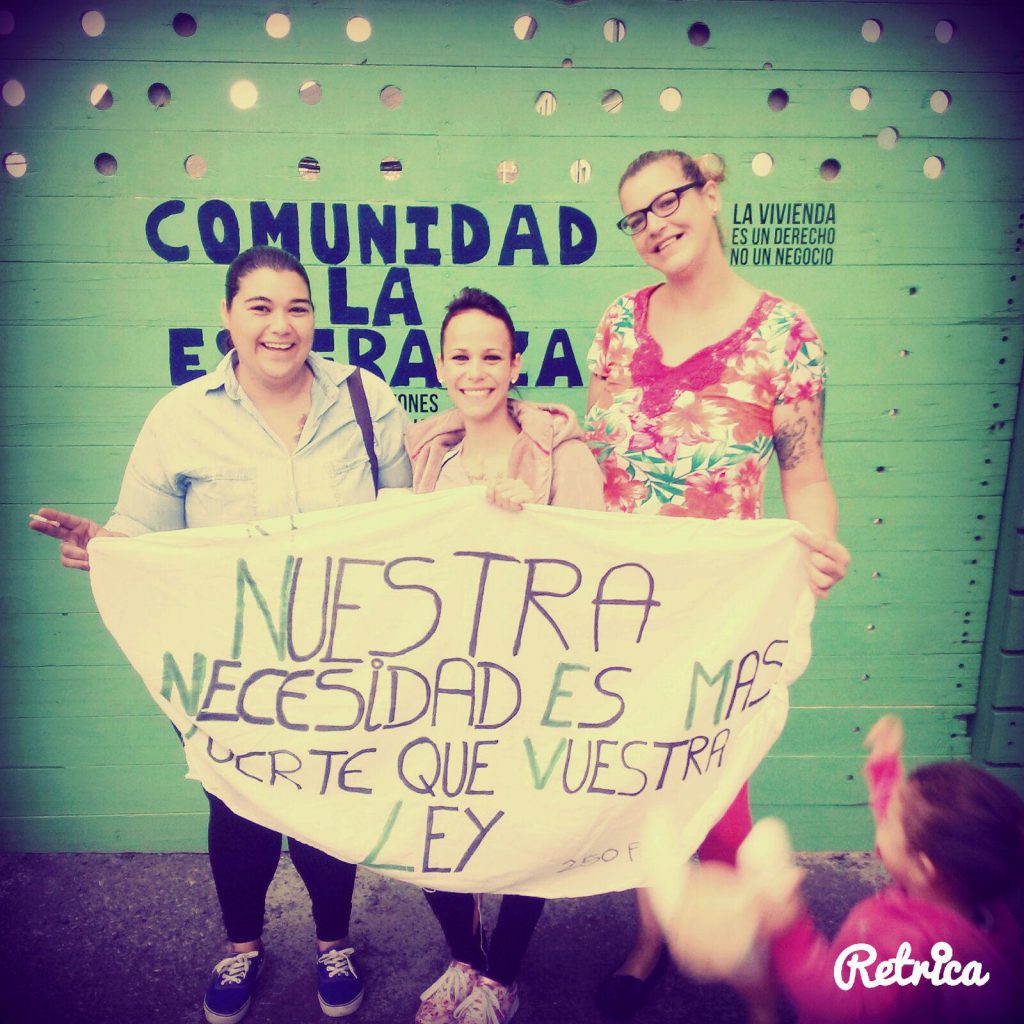
Also in 2016 the FAGC starts “Las Masías”. A community to house migrant compas escaped from the CIEs (Centro de Internamiento de Extranjeros, internment camps for immigrants) and persecuted by the police. Today 70 neighbours live there.
The resistance of “La Esperanza” also allowed a lot of young people and students to contact and become interested in the FAGC. Some of them, those who went down to Guía to lend a hand with the eviction, are today valuable members of the FAGC.


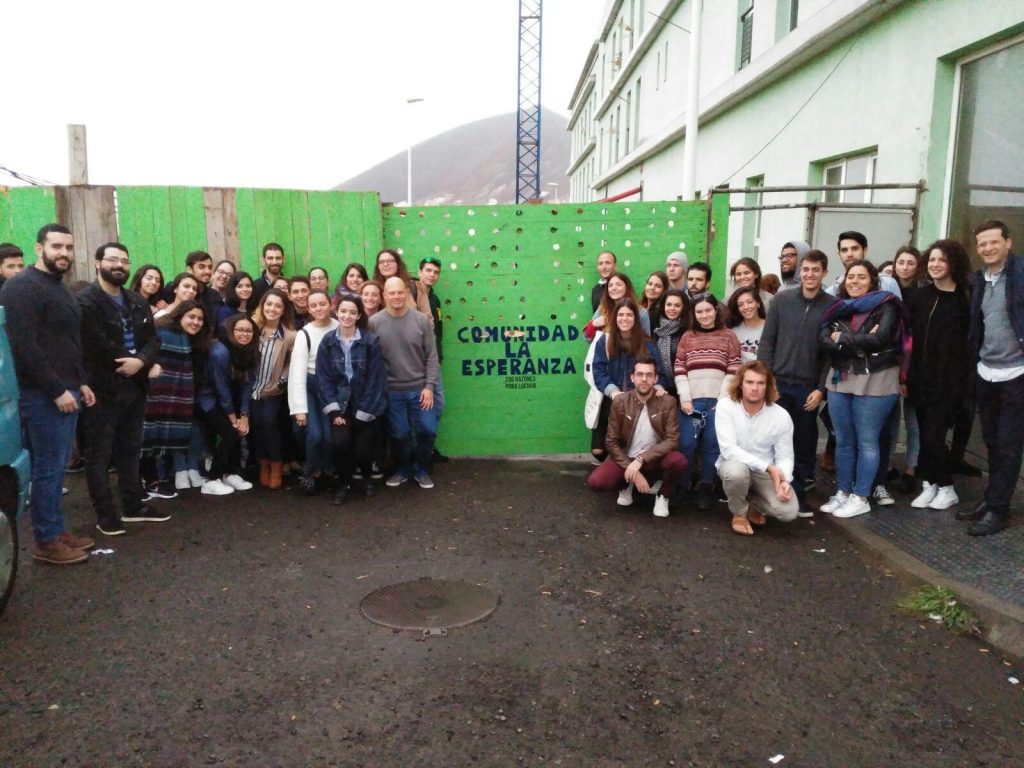

In the FAGC there’s very few anarchists and a lot of neighbours, who do not necessarily feel comfortable with the label of “libertarian”. There’s attempt to create big-tempt groups like the “Office of Popular Expropriation” but they don’t work because in the end they are the FAGC under a different name.
During the whole of 2016 there’s talks and debates about the need to create a Renters Union, like those started by the CNT in the last century. The FAGC is again on a situation of internal crisis, and it is thought to dissolve the FAGC if the SIGC doesn’t work out.
It is in January of 2017 when, without a lot of hope, an assembly is called in “La Esperanza” to decide the constitution of a renters’ union. The response from the neighbours is a surprise: they throw their 50 cents quote to the table and ask for their membership card. They do understand what an “Union” is.

The SIGC (Renters Union of Gran Canaria) is born and out of it three new communities: “El Refugio”, “La Ilusión” and “El Nido”. All except the last one still continue. The lesson from “El Nido” is still important. We are talking about a socialised school.
The idea was to turn it into a shelter for survivors of sexist violence, since in the “shelters” of the state the treatment is infamous. The school is made liveable and everything is ready. But it’s then when some neighbours make a fatal decision.
They decide to contact the mayor of the town to “legalise their situation”. For two hours the mayor kindly listens to them. Gets out to make several calls, but returns with the same cordiality and good disposition. The neighbours are very happy.
When they return home they find that the school has been walled off with all their things inside. While the mayor distracted them, the operatives condemned the house. It’s been a hard lesson, but it served to make the communities realise the nature of the institutions.
This year the compas fromInercia Docs produce the masterpiece that is “Precaristas: cronic of the struggle for housing in Gran Canaria”. A graphic manifestation of our reality, our militancy and our neighbourhood anarchism.
This year we also stopped the massive eviction of “Los Barracones del Conde” (The Baron’s Bunkhouses). The FAGC and SIGC come into contact with a different reality, the rural, the caciquism, the aristocratic, those of the exploited labourer who live in shacks. The struggle spreads from north to south.

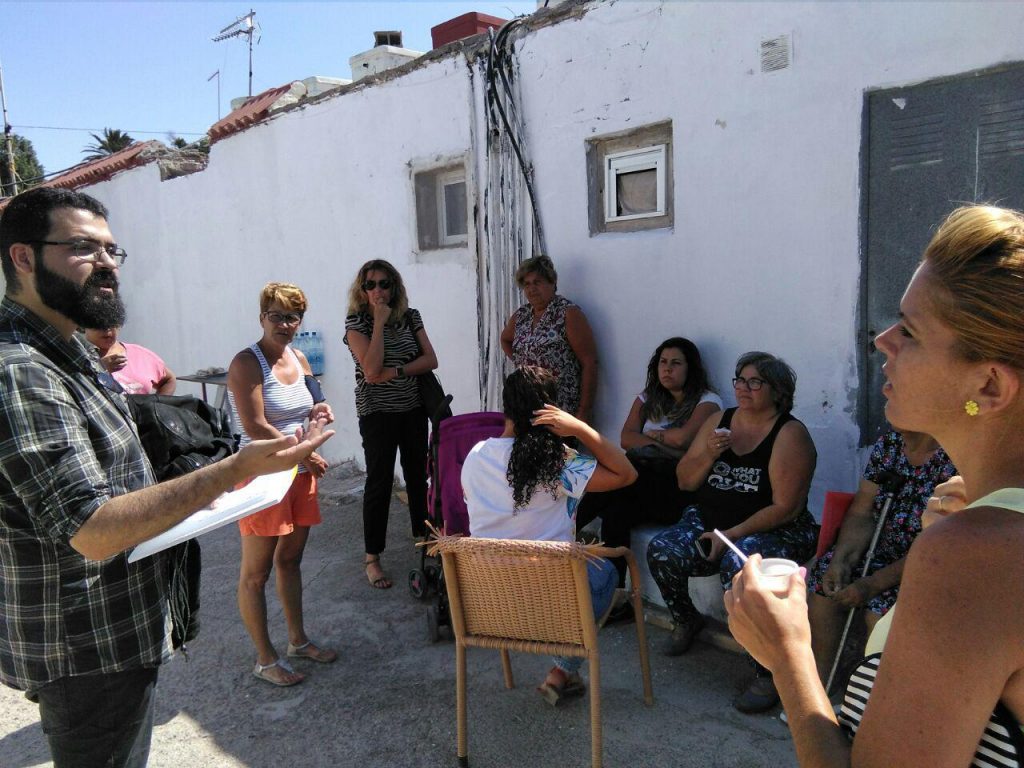
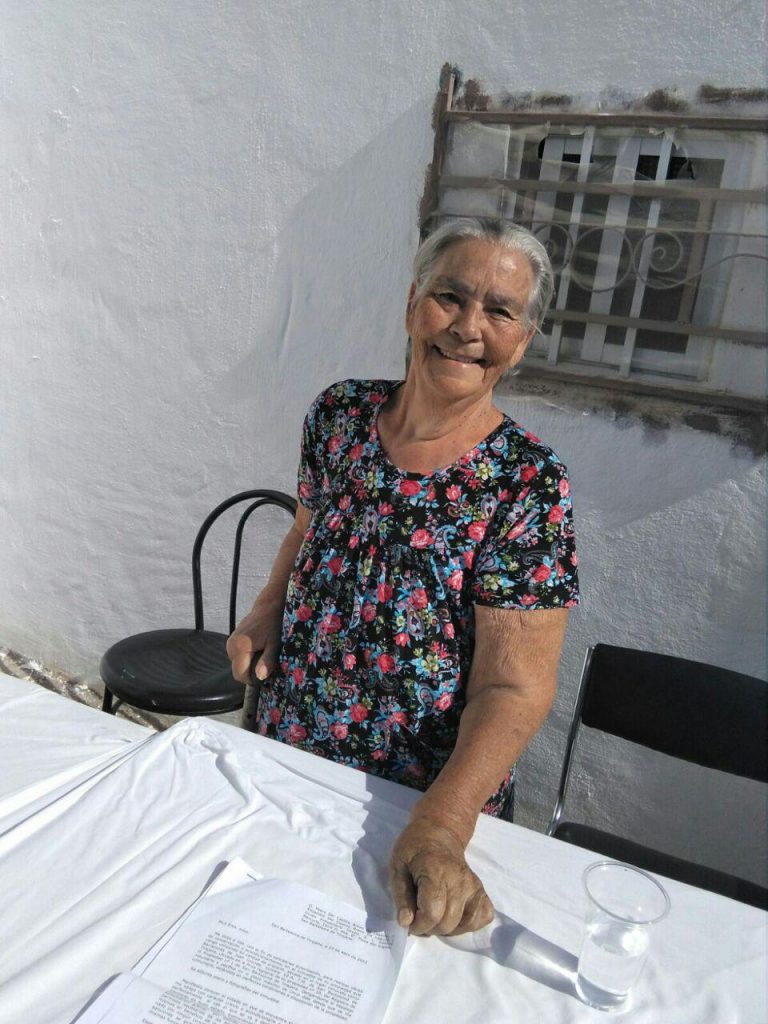

In the beginning of 2018 SIGC started to feel the excess of activity. Some compas fall sick, some get tired. The SIGC takes some months off. With hundreds of evictions stopped (some of them massive), docens of rehousings and three new communities. The wear is obvious.

The FAGC is more used to these moments of ebb and flow, so it continues its activity while the SIGC takes some time to reflect. We start an Advisory Office for Precarious People, specially cash-in-hand workers.
Many of the compas who come to us are prostitutes. We start to write accusations against pimps and police abuse, to learn the steps to claim benefits, we organise workshops on job retraining and on how to write CVs.
One of our vegetable plots is currently managed by the compañeras that are advised by our Office. Hundreds of kilos of oranges, tomatoes, avocados, potatoes or zucchini come out every month. We don’t moralise. We give tools so that no one is stepped on by no one.
We also develop a small healthcare network to give basic cover for migrant compas who fear being arrested if they come to the Canarian Healthcare System. This network, with its clinic, it’s still active today.
Towards the end of 2018 the process to evict “La Ilusión” was initiated. The FAGC answers the call and by petition of the neighbours themselves the SIGC is refounded. From here starts a Union that stops the eviction of “La Ilusión” and an average of 400 every year.
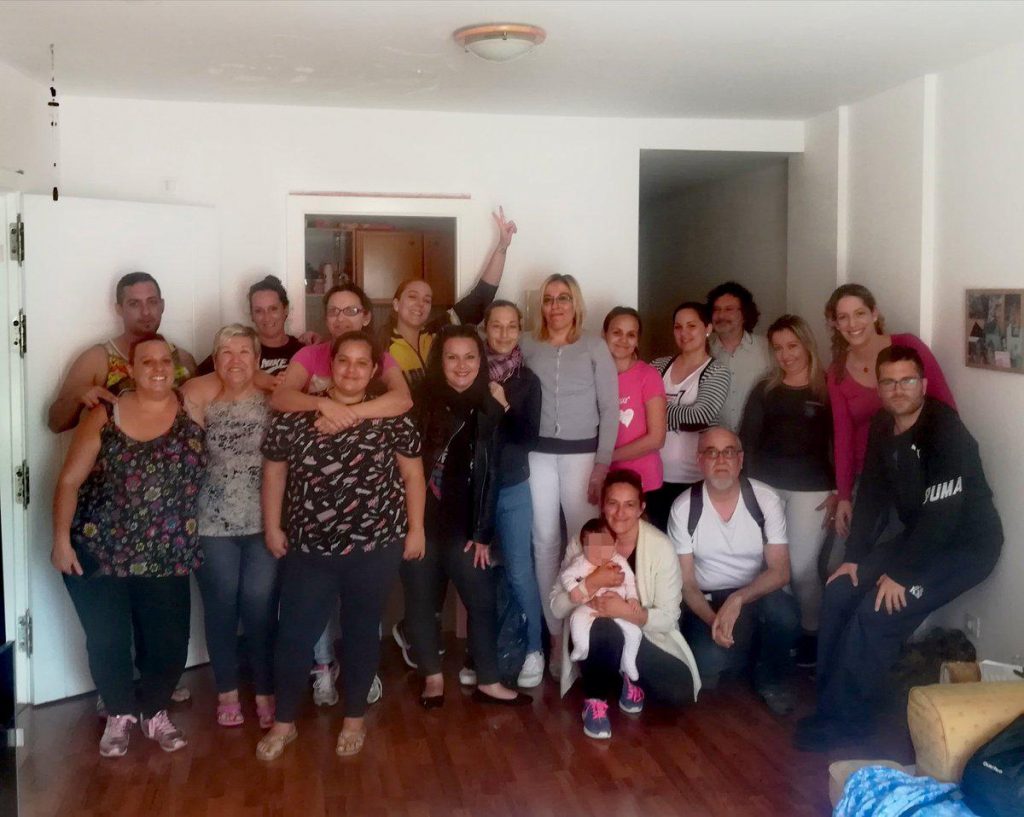
The community of “Los Girasoles”, started just before the reflection period of the SIGC, it’s joined now by the “Miraflor” Community. SIGC currently has more than 600 members and 80 organisers, with different degrees of involvement.

In the beginning of 2020 “Precaristas” was premiered for the first time in Gran Canaria. The event is an special occasion on the isle. It’s celebrated where it should be: in the square, in the neighbourhood of Guanarteme, in the outdoors, with our neighbours, with our people.

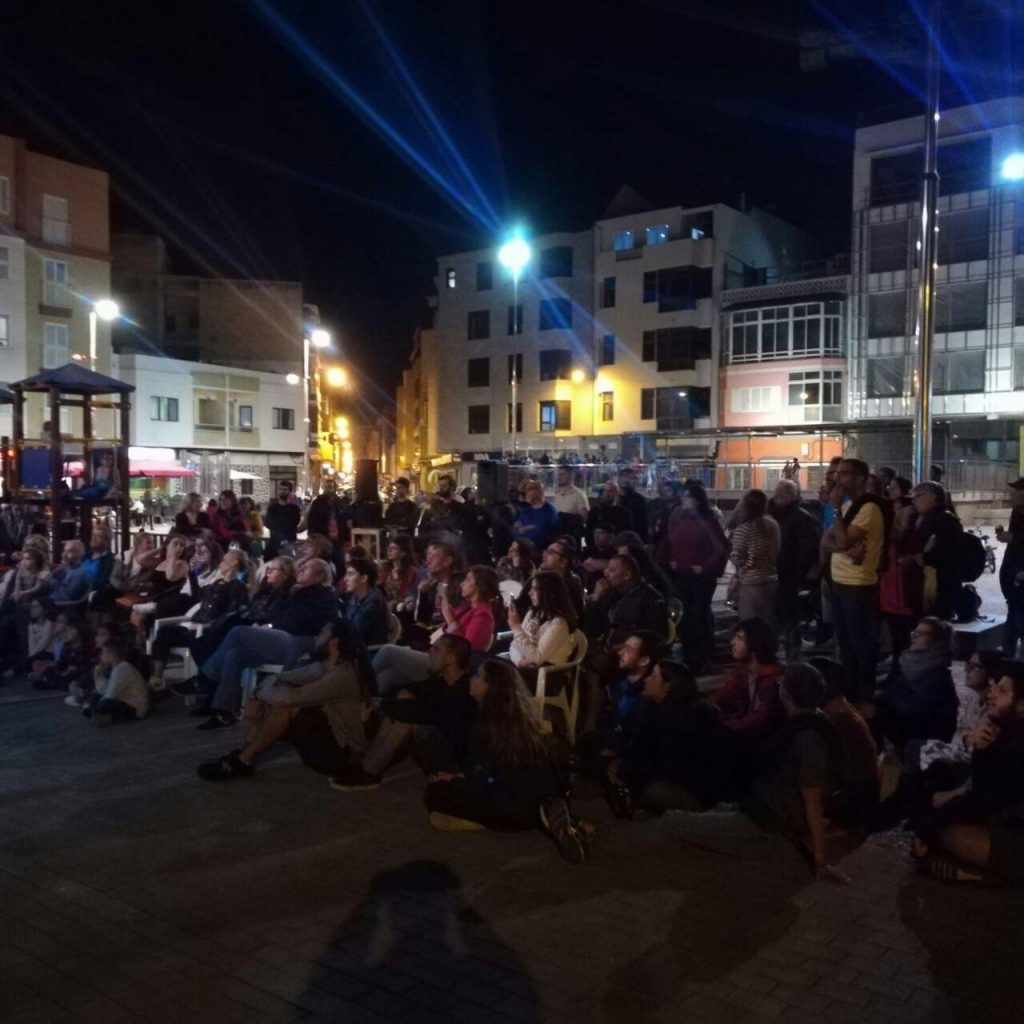
In april of 2020, the FAGC and SIGC help to promote the first rent strike in the State in the 21st century (it was only appropriate, being the SIGC the first renters union in the State in the 21st century, a fact that bothers many).

Some day we should write the internal history of this strike. Sabotaged by some, attempts to control it by others, criticised by many. We distanced ourselves quickly from the official current and we limited ourselves to creating strike committees and advising thousands of people.
More than 600 people (we only talk about data from the FAGC, the SIGC on its own will count with as many) in Canarias and in the Peninsula (yes, we dealt with many cases from the whole State) won concessions through direct negotiations.
The moratories or payment reductions we don’t even count, because they weren’t the objective of the strike. It wasn’t a general strike and the government (not fearing the “friendly fire”) didn’t suspend the payments. We did manage that organised neighbours defeated big landlords.
Even today there’s people who still enjoy a reduced rent. Others only started to pay after the State of Alarm ended, without any landlord dying because of it (in fact we have ended advising some small landlords with a mortgage).
Towards the end of 2020 FAGC starts “El Refugio II”. A community for migrants who are being persecuted where 190 people live. It’s been necessary to develop a whole infrastructure of self-sufficiency (with gardens, ovens, etc) and a buying network, increasingly needed less often.
During the hard months of the pandemic, the FAGC also developed a mutual aid network with purchases of 50 euros for each family. More than 30 of our neighbours benefited from it, and avoided having to grovel in front of the NGOs who humiliated them and even controlled the brand of pads.
In the beginning of 2021 the “Los Olmos”, with its strike committee, reaches an agreement with the proprietors to live there 8 years in exchange of 2000 euros per year. Everything thanks to that “shitty strike” looked down on by the militant elites and the “wise-men committees”.
In the beginning of this year we were also notified that the trial against our compañero Ruymán has been restarted. The FAGC and SIGC return to the streets. It is still an ongoing struggle and we need you, all of you, to win.
#RuymánLibertad #FreeRuyman
Website: Federación de Anarquistas Gran Canaria
Twitter:
FAGC
El Sindicato de Inquilinas de Gran Canaria
Read the FAGCs series on Street Anarchy.

